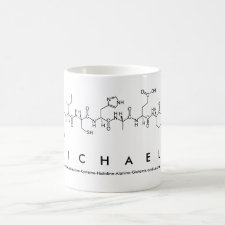
Authors: Brüggemann O, Freitag R, Whitcombe MJ, Vulfson EN
Article Title: Comparison of polymer coatings of capillaries for capillary electrophoresis with respect to their applicability to molecular imprinting and electrochromatography.
Publication date: 1997
Journal: Journal of Chromatography A
Volume: 781
Issue: (1-2)
Page numbers: 43-53.
DOI: 10.1016/S0021-9673(97)00288-4
Abstract: In molecular imprinting (MI), interactive monomers and suitable cross-linking agents are polymerized in the presence of a template. Once the template has been removed, the remaining space acts as a highly specific binding site for the template or analogs thereof, due to the unique three-dimensional arrangement of interaction points. Several steps are involved in producing such a polymer coat inside a capillary electrophoresis capillary. First, the silanization of the inner surface of the capillary with a suitable silane is necessary, to link a monolayer of unsaturated groups suitable for polymerization to the capillary surface. These monomeric groups are then integrated into the three-dimensional polymer coat produced in the next step, MI-capillary coatings ideally are highly porous and of a thickness, delta, which is smaller than the inner radius, r, of the capillary in question. Porous polymer networks can be produced by dispersive polymerization using a suitable solvent (porogen). However, the exact conditions for producing a coating suitable for capillary zone electrophoresis had to be determined experimentally. Seven porogens, namely hexane, toluene, tetrahydrofuran, acetonitrile, CHCl3, dimethyl sulfoxide and dimethylformamide, and two cross-linkers, namely ethyleneglycoldimethacrylate and divinylbenzene, at concentrations of between 5 and 20% (v/v) were investigated. In about 20% of the combinations, a polymer coat of the desired qualities was obtained, The applicability of the MI capillaries to specific separations was demonstrated for the separation of a racemic mixture of S(+)- and R(-)-2-phenylpropionic acid. trans-3-(3-Pyridyl)-acrylic acid was used as the interactive monomer in this case. (C) 1997 Elsevier Science B.V



Join the Society for Molecular Imprinting

New items RSS feed
Sign-up for e-mail updates:
Choose between receiving an occasional newsletter or more frequent e-mail alerts.
Click here to go to the sign-up page.
Is your name elemental or peptidic? Enter your name and find out by clicking either of the buttons below!
Other products you may like:
 MIPdatabase
MIPdatabase









